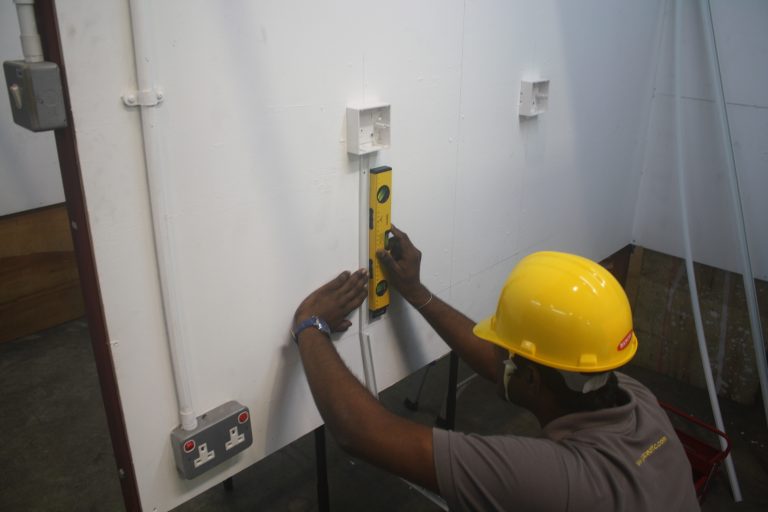Electrical plastic trunking with cable slots running along its long side can transform a messy room or a tangle of cables in your home office into an orderly one. Eliminating inappropriate trunking improves safety and the aesthetic look of a room. This guide explains how to get an installation that is as neat as possible and discusses aligning the trunking with the surrounding décor.
What Is Electrical Plastic Trunking and How to Use It?
Electrical plastic trunking is a protective type of trunk where wires can be stored and organised, keeping them out of the way and safe from view. It is produced in different sizes and colours and can fit in with the design of any room. In addition to size and colour, trunking options can blend in with the interiors of a room.
Gathering Required Tools
Efficiently collect tools before installation. Usually, they comprise a tape measure, pencil, saw, glue, screws, drill, and a spirit level. Having them readily available ensures the process is smoother and quicker without undue disruption.
Measuring and Planning
The success of an installation starts with accurate measurements. The first step is to measure the length of the wall or the surface to which you will attach the trunking. Use straight lines with a spirit level to mark the precise measurements with a pencil. This way, you will avoid mistakes. Also, this makes the process easier, as the layout is planned before the work begins. Hence, the final look is clean and neat.
Cutting Trunking to Size
After you have taken measurements, you need to cut the trunking into the required lengths. Cut to size with a saw, according to the noted measures. The cutting must be accurate so there are no gaps or visible joints between separate trunks. This will ensure uniformity in appearance.
Preparing the Surface
Surface preparation allows for better adhesion and stability upon mounting. Clean the area well so there is no dirt or debris in the way of a good stick. Inevitably, the cleaner the surface, the better the adhesive. This also allows the screws to hold well, which extends the life span of trunking.
Securing the Trunking
Keeping it neat and attaching the trunking carefully will ensure it lasts long. First, glue the back of the trunking and push it tight against the wall. Screw it in to provide extra support, despite how uneven it may be. To maintain a neat appearance, be careful to space screws evenly.
Aligning and Joining Sections
On longer runs, you want to be able to join sections together without any visible seams. Use trunking connectors to produce the perfect borderless joints. Align each trunk from the spirit level to ensure the lines are straight. Correct alignment improves both form and function.
Hiding Wires Neatly
Once the trunking is secured, load the wires (they should lay flat and not cause any bump-out from the trunking). Overcrowding makes it look messy and can also cause wire damage. Neatly organising wires in trunking gives them a polished look and makes it easy to access them when you need to add them. Studying the latest office and commercial decor trends can help develop ideas for office spaces.
Finishing Touches
Finally, match the trunking to the room’s decor. The trunking can be painted to match the wall or the surrounding trim, giving it a more aesthetic look. Furthermore, watch out for any loose parts or noticeable gaps and promptly tend to them for a clean look.
Preserving the Installed Trunking
If it is maintained periodically, trunking can stay intact for many years. It looks decent and serves a useful function. Clean the dust and check the surface for any loose sections. By attending to small problems immediately, the integrity and appearance of the trunking system can be preserved for as long as possible.
Conclusion
While the neat fitting of electrical plastic trunking enhances the safety of any environment, it also helps improve a place’s overall aesthetics. The installation process can be simplified with careful planning, precise measurements, and attention to detail. Following these steps adds a neat, polished touch that matches the room’s design. If you take care of the trunking, it will neatly hide wires behind its smooth-looking cover.


